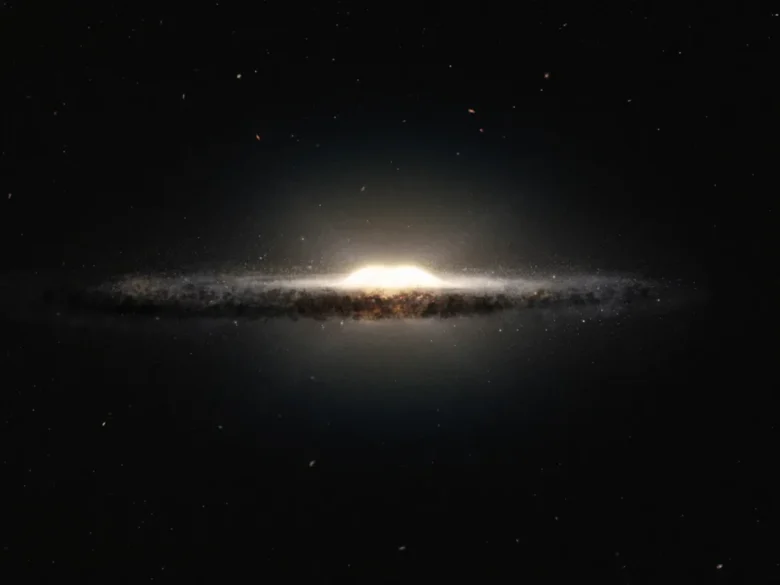| Summary |
|
Astronomers in Chile have produced the most detailed map yet of how stars move in the Milky Way’s central bulge, offering new clues about how our galaxy’s core formed and evolved.
Led by Claudia Quezada of the Pontificia Universidad Católica de Chile, the team combined data from several major telescopes, including the European Southern Observatory’s Very Large Telescope (VLT), to track the speed and direction of more than 23,000 stars near the galactic center.
The Milky Way’s bulge, a dense mass of old and metal-rich stars at its center, contains nearly one-third of all the stars in the galaxy. It has long puzzled astronomers because of its odd, peanut-like shape and complex rotation. Earlier studies showed that stars in this region move in cylindrical patterns, rotating as a solid structure, but large gaps in the data, especially near the dusty galactic plane, left the picture incomplete.
To fill those gaps, Quezada’s team analyzed new observations taken with MUSE, an instrument on the Very Large Telescope (VLT) that can separate the light of individual stars in crowded areas.
They also drew on earlier datasets from the GIBS and APOGEE surveys, which measure stellar velocities and chemical compositions. The researchers added nine new MUSE fields close to the Milky Way’s plane, within 150 parsecs of its center, capturing details that earlier surveys had missed.
Because the galactic center is packed with stars that overlap in telescope images, the team built a custom data-processing tool called PHOTfun, written in Python. It models each star’s shape and brightness to separate it from its neighbors. A companion tool, PHOTcube, extracts individual spectra from MUSE’s data cubes.
Both programs are freely available to other astronomers and have already proven more effective than older software at removing interference from the infrared sky.
Using this new pipeline, the researchers measured radial velocities and calculated velocity dispersions, which show how much that motion varies within a region. The final dataset covered 57 fields across longitudes and latitudes of up to 10 degrees around the galactic center.
Their findings confirm that the Milky Way’s bulge rotates cylindrically, meaning that stars at the same distance from the center move at nearly identical speeds, no matter their height above or below the galactic plane. This supports the idea that the bulge grew from the galaxy’s disk billions of years ago, when gravitational instabilities caused it to buckle and form a bar-shaped structure.
However, the new velocity dispersion map revealed several updates. The “wing-like” flares that earlier maps showed near the plane are gone, replaced by a smoother, boxier shape. The central peak, where stellar motion is most chaotic, now appears thinner, extending about 280 parsecs vertically and reaching speeds above 140 kilometers per second.
Astronomers are debating what causes this peak. It could come from the Milky Way’s dense nuclear cluster, a region holding about 30 million solar masses within just a few parsecs, or from stars moving along elongated orbits in the central bar. Simulations suggest that the bar’s angle relative to our line of sight naturally increases the apparent motion, making an extra mass concentration unnecessary.
The data also hint at differences between the galaxy’s metal-rich and metal-poor stars. Richer stars are more tightly bound to the bar, while poorer ones form a rounder, more spheroidal component. Separating future velocity maps by chemical composition could show whether these groups move differently, revealing more about the Milky Way’s early mergers and growth.
The new map is not meant to make dramatic discoveries but to refine what we know. The models now fit the data to within 10 percent accuracy, a notable improvement over previous efforts. Astronomers say these results will help test theories of how galaxies like ours evolve, since the Milky Way is one of the few where scientists can measure individual stars in such detail.
Upcoming observations with the James Webb Space Telescope (JWST) and the European Extremely Large Telescope (ELT) are expected to build on this work, allowing scientists to measure age and metal gradients within the bulge. Those details could show whether today’s bar and bulge formed entirely from disk stars or if early mergers played a larger role.
Source: New kinematic map of the Milky Way bulge

